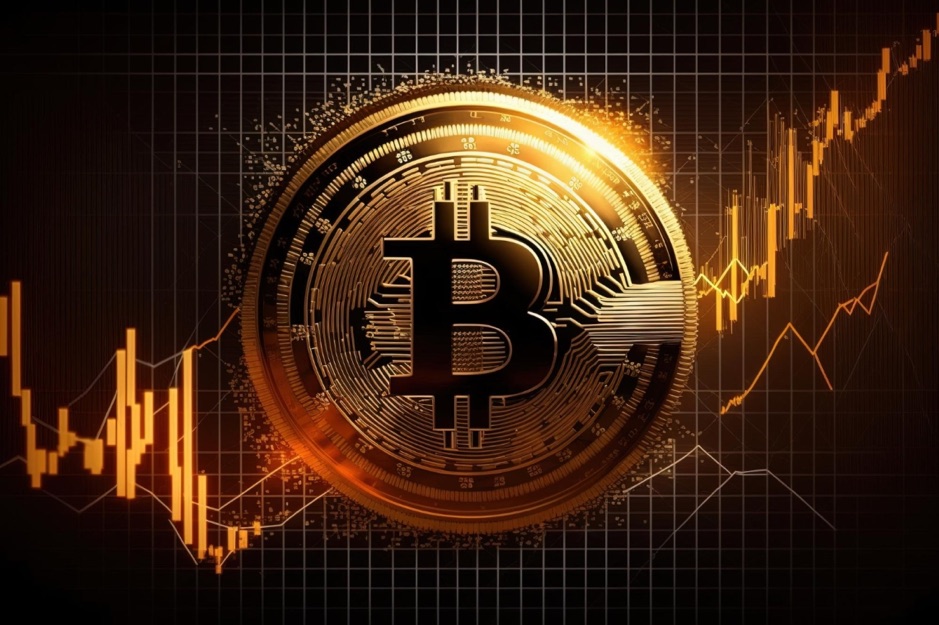Bitcoin's Rally Stalls as Chinese Stablecoin Discounts and Market Skepticism Signal No New All-Time High
2024-09-30 07:57:55Data on China with focusing stablecoins, low retail investor participation, and a skeptical outlook in Bitcoin derivatives markets all suggest that Bitcoin is not ready for a new all-time high.

Source: cryptonomist.ch
On September 28, Bitcoin closed at its highest level in two months, nearing the $66,000 mark. This rise coincided with the S&P 500 index hitting an all-time high on September 26, driven by strong economic indicators and efforts to enhance market confidence in China. However, various metrics suggest that Bitcoin is still not in a bull market.
Investor Skepticism Shadows Bitcoin's Recent Rally
Investor skepticism surrounding Bitcoin's recent rally can be attributed to several factors, including previous rejections at the $70,000 mark and growing concerns about a potential recession. Such worries often lead investors to reassess their positions in risk-on markets, which include cryptocurrencies. Although this sentiment doesn’t automatically lead to a sell-off, it creates an environment where bearish sentiment can take hold, making it easier for traders to spread fear, uncertainty, and doubt (FUD) that can suppress Bitcoin's price.
The current bullish momentum in the stock market, particularly with the S&P 500 reaching new highs, does not necessarily translate to a similar trajectory for Bitcoin. Some analysts caution that the shift in central banks toward expansionist monetary policy might indicate underlying economic risks. Contrary to common belief, this doesn’t imply that a market bubble is imminent; rather, major tech companies are often positioned to thrive even in challenging economic conditions. Companies like Google, Amazon, Apple, and Microsoft boast high-profit margins and robust balance sheets, enabling them to navigate downturns more effectively than smaller firms.
These tech giants are well-equipped to capitalize on discounted acquisitions in niche markets and face reduced competition for talent and essential resources, such as microchips critical for artificial intelligence applications. In fact, an overheated economy can negatively impact margins, as it leads to supply shortages and increased logistics costs.
On the other hand, while investors might still see value in Bitcoin’s inherent scarcity and its role as a sovereign asset, the factors driving Bitcoin’s price significantly diverge from those influencing traditional stock markets. Historically, during periods of recession fears, investors tend to seek safer havens such as gold, short-term government bonds, and companies that dominate their respective fields. This trend suggests that Bitcoin may not be viewed as a safe haven in the same way.
In essence, even if the S&P 500 continues its upward trajectory, it does not guarantee that Bitcoin's price will follow suit. Bitcoin bulls need to closely analyze the underlying market conditions to determine whether they have shifted since the multiple rejections at the $70,000 level. Factors such as declining interest rates and rising government debt may not be sufficient on their own to drive Bitcoin’s price higher. Investors should consider the broader economic landscape, including potential recession risks and market sentiment, before making predictions about Bitcoin’s future performance.
China's Stablecoin Discount Indicates Bearish Sentiment Despite Institutional Inflows
Inflows from institutional investors may have contributed to Bitcoin's recent price surge, supported by data from spot exchange-traded funds (ETFs). However, recent trends in Chinese markets suggest a contrasting sentiment. By analyzing the demand for stablecoins in China, we can better understand whether investors are entering or exiting the cryptocurrency market.
In a typical market, high demand for stablecoins leads to them trading at a premium of 1.5% or more above the official US dollar rate. Conversely, bear markets often see these coins trading at a discount. Notably, the USDT premium in China has remained below parity for the past two weeks, signaling bearish sentiment. This trend runs counter to the growing appetite for spot ETFs in the United States and reinforces the bears' argument about a lack of overall investor demand.
Furthermore, the lack of conviction among investors is also reflected in the Bitcoin futures markets. Monthly contracts, which are generally favored by institutional investors and whales due to their stable funding rates, are currently not exhibiting the expected bullish signals. In neutral market conditions, these derivative contracts typically trade at a 5% to 10% annualized premium to reflect their longer settlement periods. However, data reveals that the Bitcoin futures premium has stabilized at 6%, even as prices rallied toward $66,000 on September 29. This indicates that savvy derivatives traders are maintaining a neutral stance, showing hesitation likely driven by fear of missing out. Yet, this lack of decisive action may provide bears with the necessary confirmation of weak conviction in the market.
Disclaimer: FameEX makes no representations on the accuracy or suitability of any official statements made by the exchange regarding the data in this area or any related financial advice.